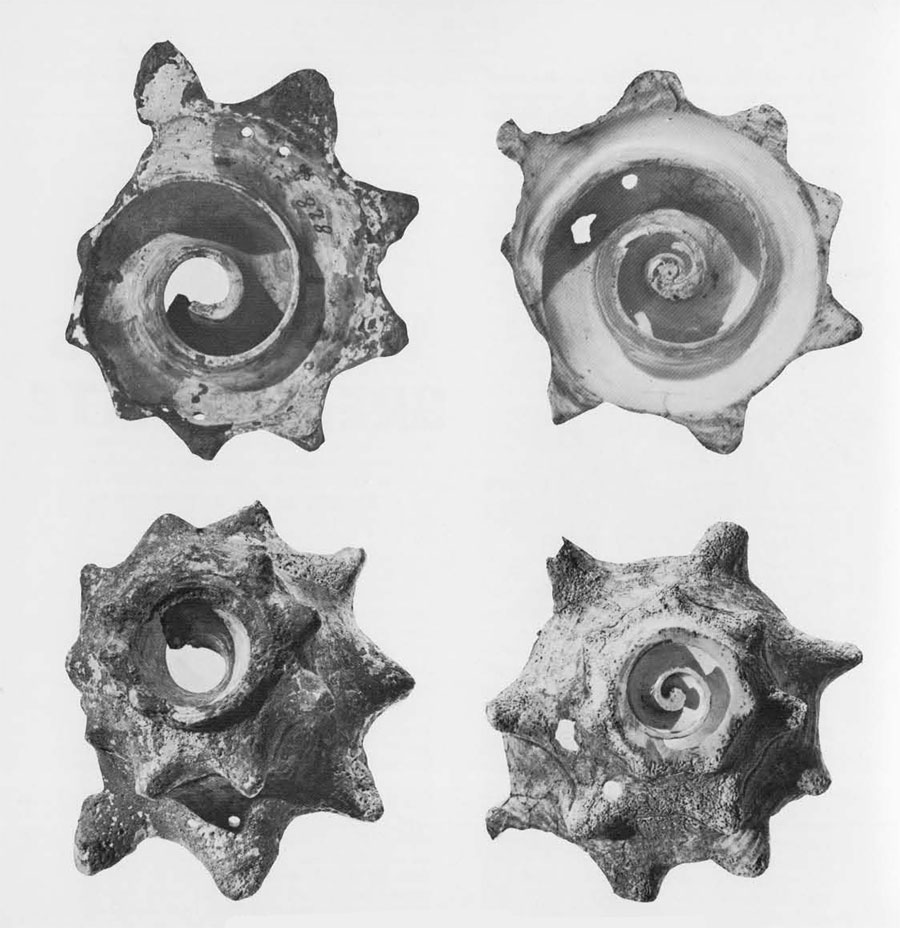ehecailacocozcatl, xicalcoliuhqui
Notes: Game on...on the radio...back from my nap, no Angels game on, rain out maybe...checked...Angels 8-2...TBD...they got six full innings in in Baltimore...so, listen to the Nationals and Dodgers...Dodgers 1-0...to top of second...Angels should win their game, enough innings finished...so, so, with my thoughts full of rattlesnakes, trying to pin down the chacana motif, and it's lookalike, the diamonds on diamond back rattlesnakes, I did search, rattlesnake Aztec...this is kind of simple minded...the national flag of Mexico portrays a rattlesnake in the beak of an eagle perched on a cactus...and Aztec ruins are full of rattlesnakes portraying the famous Quetzalcoatl, the Feathered Serpent...and that search turned up mention of the 'wind jewel' Quetzalcoatl wears...brb...
quote
Quetzalcoatl, the Aztec god of wind, air, and learning, wears around his neck the "wind breastplate" ehecailacocozcatl, "the spirally voluted wind jewel" made of a conch shell.

https://en.wikipedia.org/wiki/Quetzalcoatl
unquote
now, I've seen "the spirally voluted wind jewel" before...it's at wiki's take on step frets...
quote
Xicalcoliuhqui (also referred to as a "step fret" or "stepped fret" design and greca in Spanish) is a common motif in Mesoamerican art.[1][2][3][4] It is composed of three or more steps connected to a hook or spiral, reminiscent of a "greek-key" meander.[
... ... ...
It is also possible that the motif represents the cut conch shell which is an emblem of Ehecatl, the wind god, an aspect of Quetzalcoatl.[
https://en.wikipedia.org/wiki/Xicalcoliuhqui
unquote
I've studied close the conch shell reference...in fact, it triggered, as it's said, my cosmic seashell paintings for the strada easel contest last September...easier to get a basket of shells than a den of rattlesnakes!...anyway, wiki gives the name for the wind jewel, ehecailacocozcatl...and, I searched that up to looksee...
quote
“The body and face of the god are painted black, since he was the pre-eminent priest and the originator of the self-sacrifice, which consisted of drawing blood from the ears and other parts of the body by pricking them with maguey spines and eagle or jaguar bone needles. Hence we see a bone in his headdress, from which hangs a green band terminating in a blue disk, the symbol of the chalchihiatl, the precious liquid, human blood. As further sacerdotal attributes, he carries in one hand an incense pot with a handle in the form of a serpent and in the other a bag of copal incense.”
“Covering his mouth there is a red mask in the form of a bird’s beak. This mask identifies him as the god of wind, in which form he was worshipped under the name of Ehecatl, meaning ‘wind.'”
“On his head he wears a conical cap made of ocelot (or jaguar) skin; it is tipped with a turquoise ornament and held in place by a tuft made of loops. The breastpiece edged with shells, the bracelets, and the ankle bands are likewise made of ocelot skin. His breastplate, called ehecailacacozcatl, or ‘breastplate of the wind,’ is formed by the transverse cut of a large sea shell, and his earplug is a turquoise disk from which hangs a red tassel and an object of twisted shell called epcololli, ‘twisted shell.'” (Quotations after Caso, 1958, “The Aztec: People of the Sun,” University of Oklahoma Press, pp. 21-23.)

https://www.penn.museum/sites/expedition/the-wine-gods-breastplate/
unquote
the pectoral doesn't quite look like a step fret...the conch shell somewhat...about here one realizes most anything spiral shaped looks like a step fret...so, searched ehecailacocozcatl...and, I forget how, I ended up at El Tajin again...
quote
"During the epi-classic period, a dramatic spread of feathered serpent iconography is evidenced throughout Mesoamerica, and during this period begins to figure prominently at sites such as Chichén Itzá, El Tajín"
wiki
now, I'd been seeing some clips of El Tajin on youtube, and noted in one step frets painted large on a wall...a restoration...but it was tiny tiny in the clip...even left a comment, 'anyone know where there is a better, bigger, pic of those painted step frets?'...no luck...now, Tajin I've noted for the step frets going up the staircase sides of the Pyramid of the Niches...and in Diego Rivera's painting of same...well, looking more, I find them all over Tajin...the chacana step motifs too...and then my eyes blinked...El Grande Greco...National and Angels back on the radio...bottom of eighth...Angels 8-3...200 people in the stands!...
quote

This set is known as the great Xicalcoliuhqui or the Great Greca, in the extreme northwest of El Tajín. It is a wall in the form of spiral or stepped fret and representing a cut sea snail, an attribute that identifies the Quetzalcoatl God, whose meaning is associated with wind or movement.
https://tsproject-com.webnode.mx/news/la-gran-greca-o-la-gran-xicalcoliuhqui/
unquote
from the ground, it doesn't look very step frettish!...brb...
quote
Entrelazando - El Tajín (parte 1)
https://www.youtube.com/watch?v=sH_RxVqaqe0
unquote
bottom of ninth...that bird's eye view is of a model...Le Gran Xicalcoliuhqui...couldn't find a drone view...apparently, in Mexico, Mesoamerica, Pan-America, the step fret is as well know as Coca Cola brand logo...I just came to it, like much else, roundabout!...ral..."put a halo over this one"...again, like last season, a lament for B'mor's plight...Angels 8-3...
:)
DavidDavid










No comments:
Post a Comment